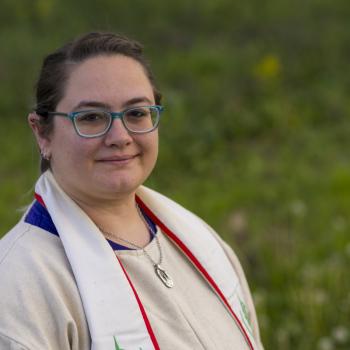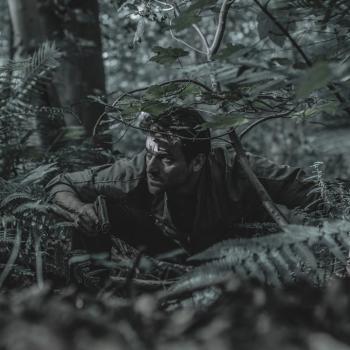In case you have not yet heard, Sarah Palin has just finished what appears to be the first leg of a bus tour of some of America's great historical sites. No one seems to know why she has decided to embark on this kind of tour at this particular time, but Palin has been drawing large crowds wherever she goes. So far the "One Nation" tour has taken her to Gettysburg, the Pentagon, Mount Vernon, Philadelphia, Times Square (where she ate pizza with Donald Trump), the Statue of Liberty, and, of course, New Hampshire.
The highlight of the trip thus far, at least from the perspective of the media, occurred last week when Palin was asked about her experience touring the Old North Church in Boston, the site where church sextons hung two lanterns to alert the people of the Boston area that British troops were on the move. Later that evening, Paul Revere would get on his horse and warn the people of Lexington that indeed the British were coming.
Here was her description of Revere's famous ride:
He who warned (pause) the British that they weren't gonna be takin' away our arms, by ringing those bells and, um, making sure as he's riding his horse through town to send those warning shots and bells, that, uh, we were gonna be secure and we were gonna be free, and we were gonna be armed.
As might be expected, Palin's fast and loose interpretation of this iconic moment in American history has become additional fodder for her political enemies. Pundits have been using the incident as further evidence that Palin is an anti-intellectual populist who has no business even thinking about running for president. Conservative columnist David Brooks recently said on the PBS News Hour that "every second we spend on her (Palin) is a second of our lives we will never have back. So, it's sort of temporary euthanasia."
The criticisms of Palin's remarks in Boston have largely focused on two issues:
First, Palin described Revere ringing "bells." As far as we know, Paul Revere did not use bells to warn the countryside that British troops were coming. As historian J.L. Bell has noted at his excellent blog Boston 1775, Palin may have been confused by a document she saw in the Paul Revere House describing Revere's adolescent work as a bell-ringer at Boston's Old North Church. In other words, Revere was very familiar with bell-ringing, but he did not ring them on that famous ride through the Boston countryside.
Second, Palin said that Paul Revere rode to "warn the British." At first glance, this statement makes Palin look like a real dunce. Even elementary school students know that Revere mounted his horse on April 18, 1775 to warn the residents of Massachusetts that British troops were marching toward Lexington to confiscate colonial artillery and arrest some of the more prominent leaders of the patriot cause.
In Palin's defense, Paul Revere did "warn the British" that the Massachusetts militia was on its way. But his warning occurred after he had been captured. I hardly think that this is what Palin was referring to when she described Revere's heroics. And the actions of her followers who quickly rewrote the Wikipedia article on Revere to make it conform to Palin's description of the event should serve as a reminder to teachers everywhere to be careful about letting their students use the online encyclopedia as a source.
So let's face it, Sarah Palin got a few things wrong about Paul Revere's ride. But if we put her annoying sing-song rhetorical style aside for the moment, I think she did as well as can be expected. I wonder how many Americans, when faced with a point-blank historical question of this nature, could do much better.
But by focusing on Palin's factual errors we miss a larger lesson about the purpose of studying history and visiting historical sites. As an astute commentator on my blog recently pointed out, it is natural to approach the past from the perspective of our own worldview. This is why Palin tried to spin Revere's ride into a lesson about the Second Amendment (which would not be passed until roughly sixteen years later). When Palin left the Old North Church she took with her a lesson about the right to bear arms and the "security" that comes through personal gun ownership. (By the way, the British troops were heading to an artillery dump. They were not heading to Lexington to confiscate personal firearms.) I am guessing that the "right to bear arms" was not the primary lesson that the curators at the Old North Church wanted to communicate when they designed the exhibits that Palin saw.





